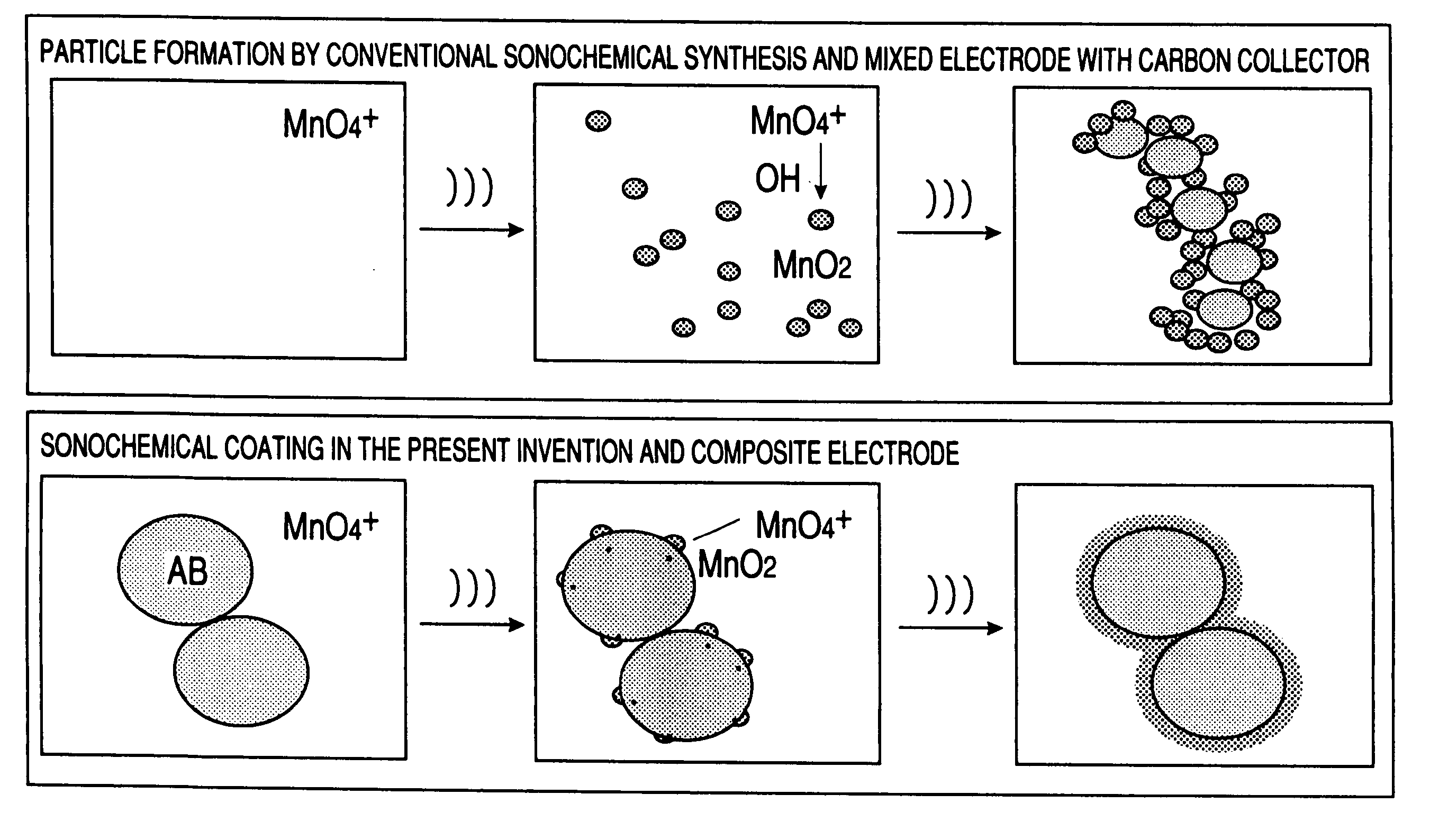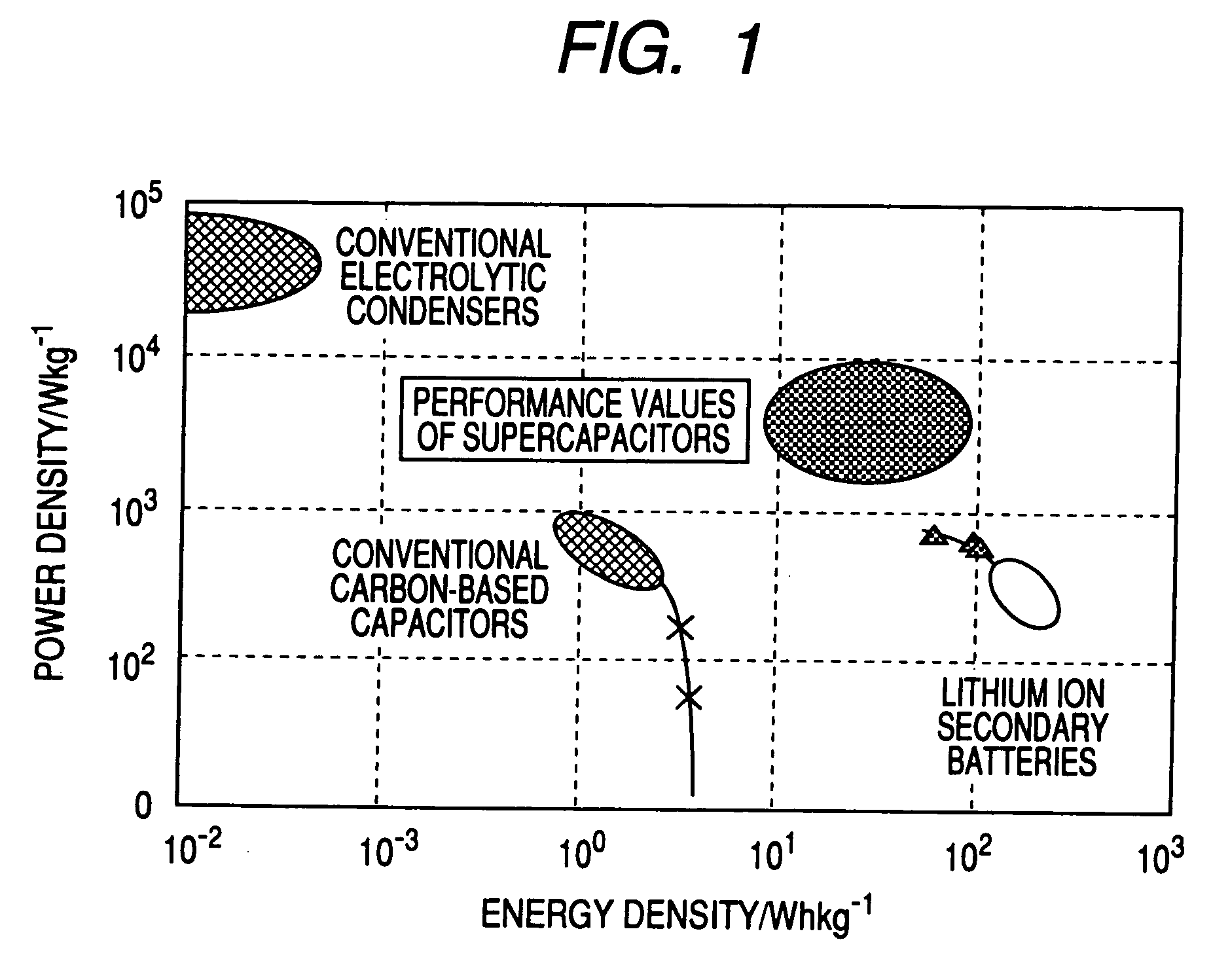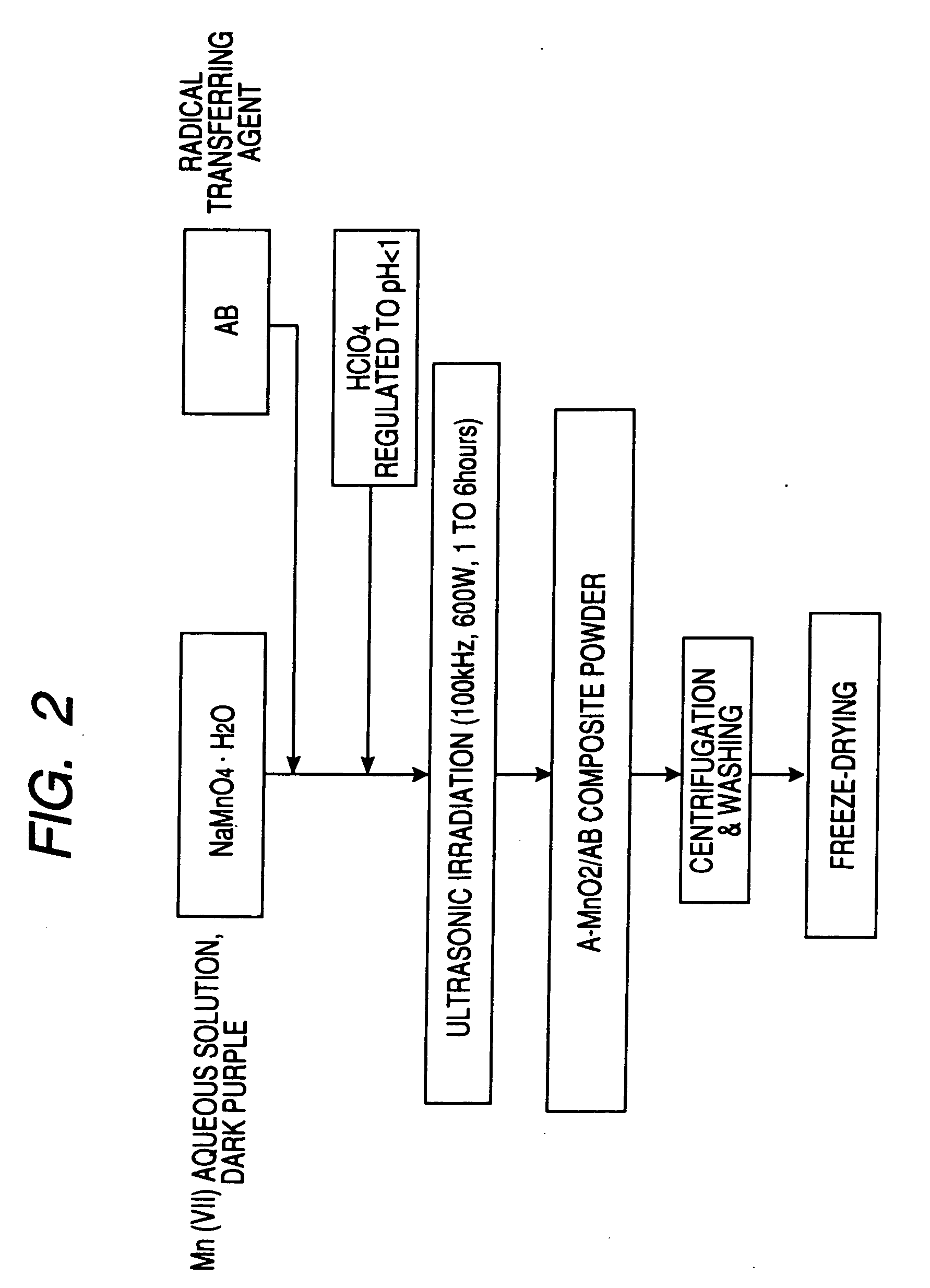Carbon fine powder coated with metal oxide, metal nitride or metal carbide, process for producing the sdame, and supercapacitor and secondary battery carbon fine powder
a technology of carbon fine powder and metal oxide, which is applied in the direction of cell components, cellulosic plastic layered products, mechanical vibration separation, etc., can solve the problems of capacitors not being used in industrial applications, extremely slow process, and extremely low energy density
- Summary
- Abstract
- Description
- Claims
- Application Information
AI Technical Summary
Benefits of technology
Problems solved by technology
Method used
Image
Examples
examples
[0048] The followings will show specific examples of the present invention but the present invention is by no means limited thereto.
examples 1 to 42
Production of Carbon Fine Particles Coated with a Thin Film Layer of Amorphous Manganese Oxide Layer on the Surface:
[0049] Carbon fine particles were produced in accordance with the procedure shown in FIG. 3.
[0050] Potassium permanganate (KMnO7) containing a heptavalent manganese ion was dissolved in water to form an aqueous potassium permanganate solution having a manganese ion concentration of 0.001M to 0.1M. The aqueous solution was mixed with an acetylene black having a high specific surface area (60 m2 / g, measured by BET) to form a dispersion solution of both materials. The mixed solution was irradiated with an ultrasonic wave to reduce potassium permanganate (KMnO7) in the solution, whereby particles wherein the surface of the acetylene black was coated with a thin film layer of amorphous manganese oxide were obtained.
[0051] In the present Example, the intensity of the ultrasonic wave was changed within the range of 1 mW / cm3 to 1 kW / cm3 and the irradiation time of the ultr...
example 43
[0065] Carbon fine particles coated with a thin film layer of a silicon carbide layer was produced in the same manner as in Example 1 except that an alkoxy silane was used instead of potassium permanganate (KMnO7). The ultrasonic irradiation conditions were 100 kHz, 600 W, and 1 hour.
[0066] The carbon fine particles coated with a thin film layer of a silicon carbide layer dispersed in the solution were separated and isolated as a solid precipitate by centrifugation. It was washed with distilled water several times to remove impurity ions (potassium ions, unreacted permanganate ions, and other common impurity ions) by washing and was subjected to a drying and dehydration treatment at 120° C. for about 12 hours to obtain carbon fine particles coated with a thin film layer of a silicon carbide layer.
[0067] Furthermore, it was confirmed that the same production can be effected with a metal oxide, metal nitride or metal carbide, such as chromium oxide, aluminum oxide, silver oxide, cop...
PUM
| Property | Measurement | Unit |
|---|---|---|
| thickness | aaaaa | aaaaa |
| frequency | aaaaa | aaaaa |
| pressure | aaaaa | aaaaa |
Abstract
Description
Claims
Application Information
 Login to View More
Login to View More - R&D
- Intellectual Property
- Life Sciences
- Materials
- Tech Scout
- Unparalleled Data Quality
- Higher Quality Content
- 60% Fewer Hallucinations
Browse by: Latest US Patents, China's latest patents, Technical Efficacy Thesaurus, Application Domain, Technology Topic, Popular Technical Reports.
© 2025 PatSnap. All rights reserved.Legal|Privacy policy|Modern Slavery Act Transparency Statement|Sitemap|About US| Contact US: help@patsnap.com



